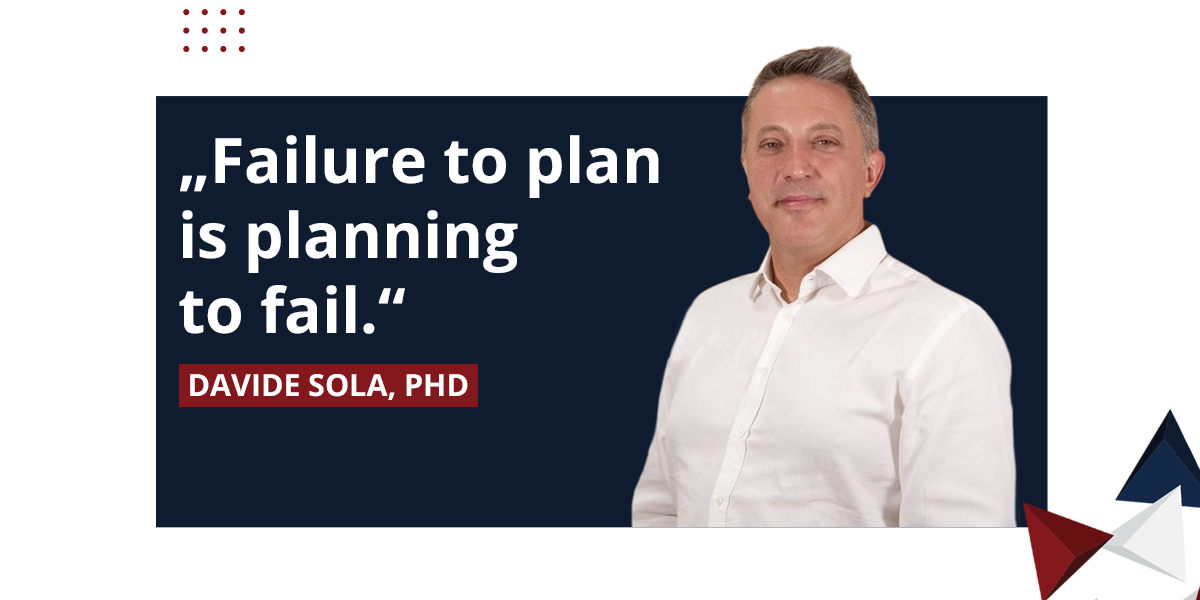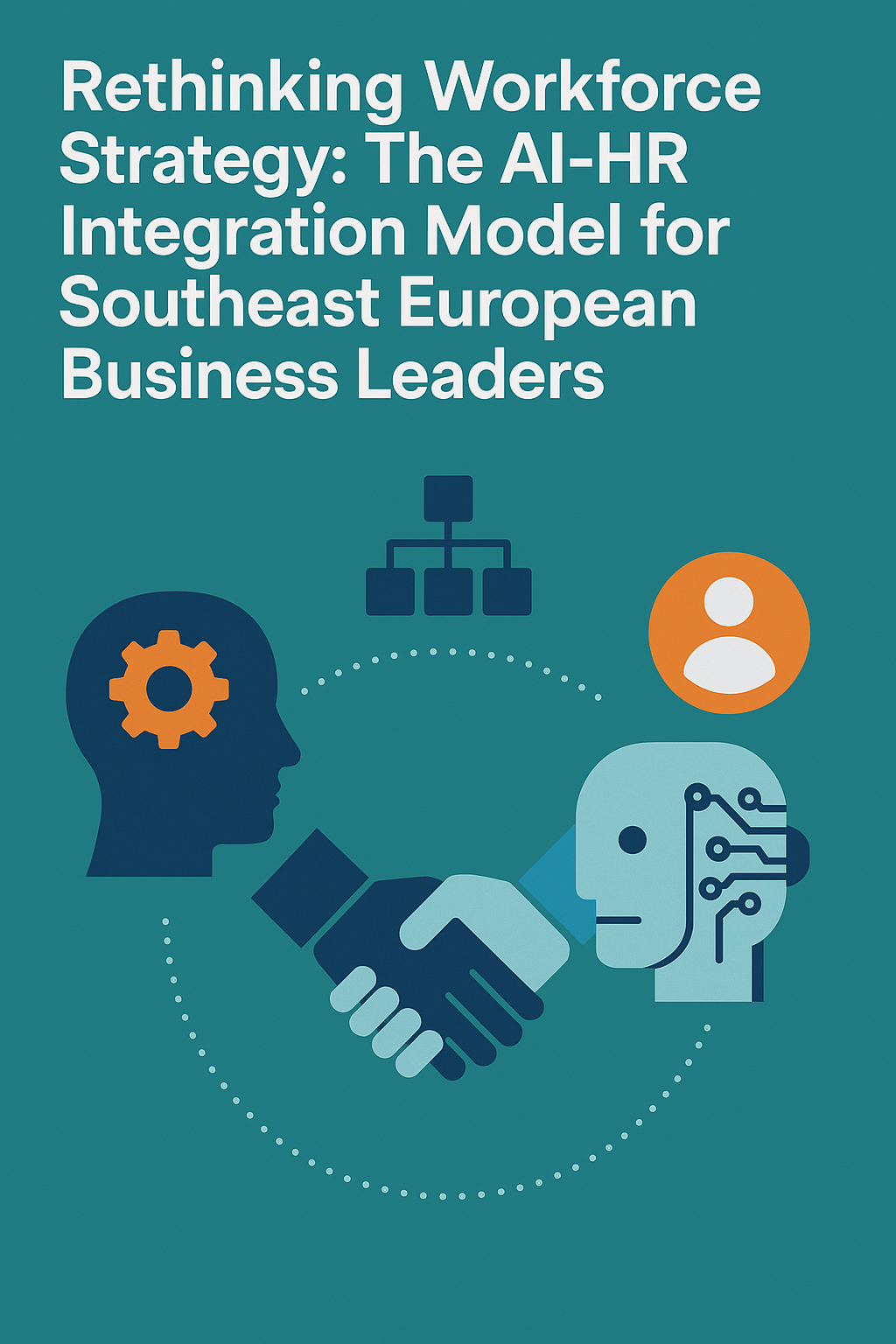COTRUGLI Business School has become the official distributor for Strategy in Action (SiA) program.
SiA is the key element of the London Stock Exchange ELITE program that helped more than 500 companies build their strategic growth and scalability plans.
From November 8 to November 9, 2022, our professor Davide Sola, PhD delivers a free demo workshop Strategy in Action. Participants will have the opportunity to experience the first platform proven to increase the success rate of their business strategy. The workshop is organized in cooperation with Privredna banka Zagreb and Zagreb Stock Exchange.
In this interesting interview with Davide Sola, PhD learn why it is important to redefine business strategy, how to keep your team informed on strategic decisions and what are market predictions.
The importance of redefining business strategy
- 1. What are the main stages of creating and implementing a company’s strategy?
In my many years of experience as a Scholar and as a consultant at McKinsey and at 3HORIZONS I had the privilege of working with bluechip companies, and this has enabled me to experience firsthand a wide range of business challenges – and therefore formulate a truly effective approach to creating and implementing strategy.
Myself and my colleagues see the predominant stages to successful business strategy creation being Strategy Formulation, which is the development of a clear vision, mission and level of ambition; as well as the conducting of internal and external analysis and setting of strategic priorities. We then support organizations in the development of their operating plan, if internal and external funding is required. A phase that we term Strategy Execution then includes the “implementation” aspect of your question, facilitating the setting of OKR’s and continuous improvement to ensure the strategy is being carried out throughout the organization. Finally, no strategy is complete without regular monitoring, reporting and review, which we term the Strategy Refresh.
2. What are the key components of a strong strategic plan? Can you provide examples from your previous experiences?
Firstly I believe we need to define what a strategy actually is! For me, a strategy is a set of coordinated, sustainable and creative actions performed by a coalition of people, which focus on one or more Strategic Priorities that aim at creating value.
Within that, strategy is about three choices:
- The first choice is about defining the Strategic Priorities that a company needs to address with the Strategy.
- The second choice is about choosing the tactics or initiatives that will help to address each Strategic Priority.
- The third choice is about reducing the uncertainty and the risk that the first two choices are wrong.
3. How often should a strategic plan be updated?
We believe that a strategy isn’t something that is just worked on once a year and then put to the side, it needs to be consistently worked upon, implemented and updated. That’s why we have developed the SiA Platform, to support this process. The SiA Platform encourages consistent work from the management team not only on the development of the strategy but the execution of this by the organization.
There is a “more formal” yearly strategy refresh, but ultimately we look to facilitate an AGILE development and implementation of the strategic plan; that includes monthly, quarterly and yearly progress reviews.
Only around 20% of senior-level executives are able to list their company’s top priorities
4. In your estimation, what percentage of successful companies have an elaborate strategic plan?
FAILING TO PLAN IS PLANNING TO FAIL, any successful company has a strategic plan! It may not be a glossy Powerpoint document BUT the company has clearly identified long terms goals, a set of priorities and applied discipline in the implementation.
However, one of the key challenges we see is how leaders – at each level of a company – can list their company’s top priorities; which is a key component of any strategic plan.
In an MIT study from 2018, it was found that even in high-performing organizations, only around 20% of senior-level executives were able to list these priorities, and even amongst the top team, this was only around 50%.
What I would say is that organizations that are better able to clearly communicate and disseminate their strategy and priorities through their leaders are better placed to be successful!

Visiting professor of strategy at COTRUGLI Business School and CEO at 3HORIZONS
5. What is your process for identifying and prioritizing goals for clients? Can you provide an example from your previous work?
We work on developing strategy through the consistent implementation of inputs and outputs. The outputs – which ultimately is the strategic plan – are only as good as the work you put in.
The process for identifying and prioritizing goals starts with an understanding of a company’s level of ambition (what they want to achieve), and then a thorough deep dive on their internal and external analysis. The internal analysis will highlight a company’s core strengths and weaknesses in relation to its competencies, resources and competitive advantages. This will trigger questions and reflection that generates ideas on improving or potentially completely rethinking their approach.
The external analysis then provides a framework to help a business devise their strategies for future growth. We do this by analyzing existing markets they play in, and exploring new opportunities to help grow the business further.
When these elements are combined with the client’s industry-specific expertise, we are able to identify and prioritize goals with them that are fact-based and data-driven.
Get closer to your customers
6. Describe your process for conducting market research. What tools do you find most useful?
There is never a singular process for conducting market research, as each challenge, problem or opportunity is different, and may require a slightly nuanced approach. However, the most important aspect to keep in mind when thinking about market research is GETTING CLOSE TO YOUR CUSTOMERS!
We should never be satisfied or fall into the pitfalls of segmenting our market by demographics – we need to always strive to speak with and observe those within the market to glean those vital pieces of information that will enable an organization to take important decisions.
There is an excellent video from the late (great) Clay Christensen talking through a real-life example that perfectly illustrates the importance of OBSERVING your customers, and getting close to them:
Let passion drive business strategy
7. How do you keep your team informed of strategic decisions?
As we discussed in one of the earlier questions, one of the greatest challenges – and often failures – of an organization is disseminating information and keeping their leaders and teams informed of priorities and strategic decisions.
We look to overcome this through processes and technology. In terms of processes, we ensure regular and quick touchpoints between our team, including everyone in the decision-making and communication of strategic decisions.
Sitting alongside this, we utilize our own proprietary technology – the SiA Platform – to have a centralized, up-to-date and collaborative location where everyone can view, contribute to and execute upon the strategy.
Let passion drive strategy: Employees should be included throughout the strategy and invited to collaborate through the development process.
Get employees behind leadership: Ensuring your employees are enthusiastic about improving the company is essential. Too often, senior teams retreat to offsite resorts to develop strategy, only to return and force it upon the rest of the company.
8. How do you measure whether a strategy is effective?
Ultimately, the feedback and measurement of whether a strategy is effective is Value Creation! Value creation has proxies such as the ROIC (Return on Invested Capital) or EVA (Economic Value Added) which are the consequence of a good strategy. Of course, to understand what drives strategy you need to have data-driven insights. Through our proprietary method at 3HORIZONS, we utilize a range of intelligent tools and analytics to ensure that the inputs are data-driven, and therefore we can track the implementation and effectiveness of the strategy through the bottom line – across a range of financial indicators as well as OKR’s.
9. Is the situation in Europe different from the rest of the world?
The current situation is certainly complex and challenging, however, in this day and age I do not think we can separate from that the rest of the world.
We need to understand that the world is becoming increasingly complex and making strategic choices is becoming a much more difficult task. We are moving from a world of infrequent disruptions, disconnected systems, small data and where people work for a living – and transforming into a place of very frequent (and more catastrophic) disruptions, hyperconnected systems, big data and people wanting to work for a purpose.
With the above in mind, I think we need to see the global situation as a truly global challenge – where everything and everyone is connected.







